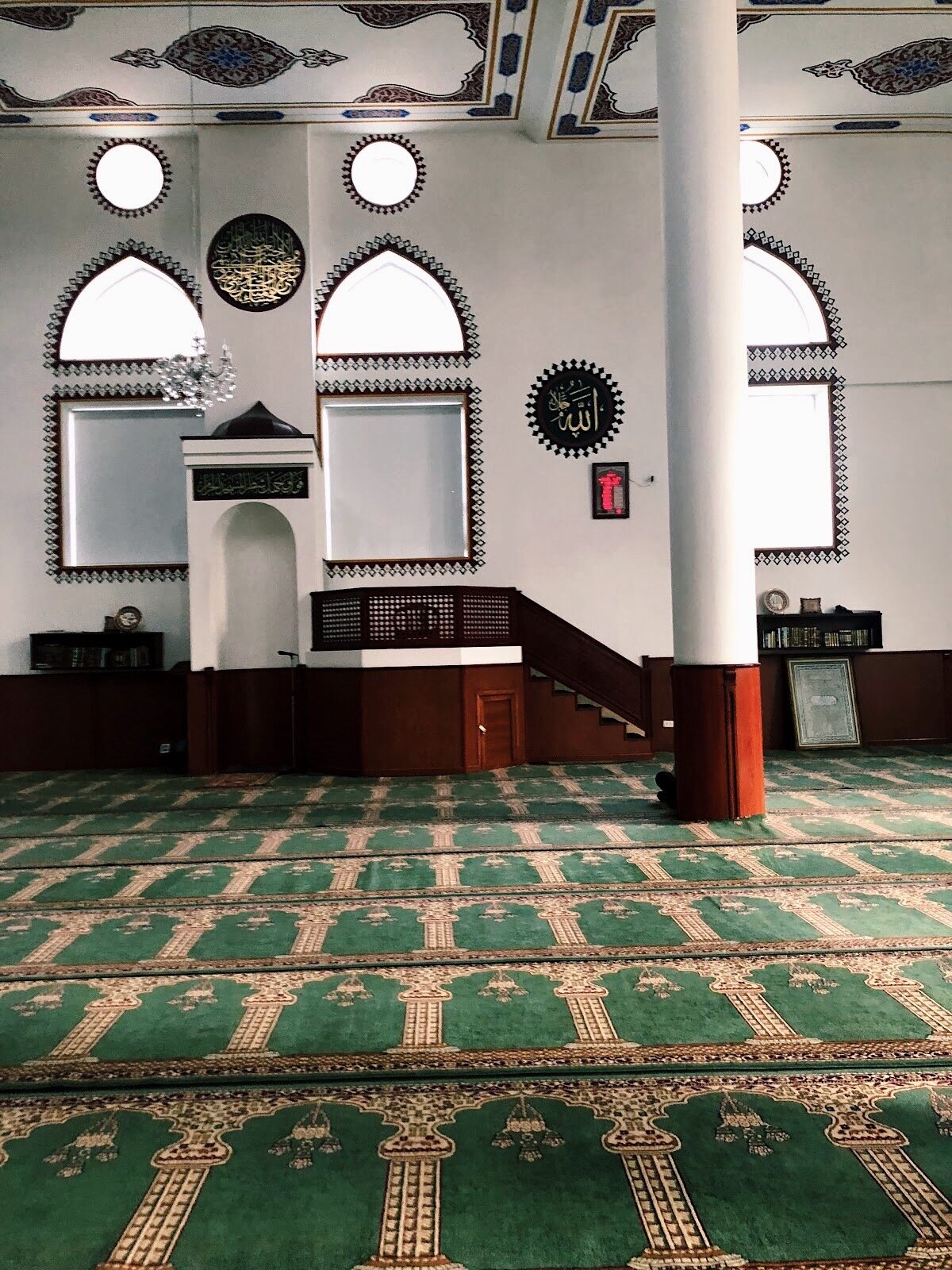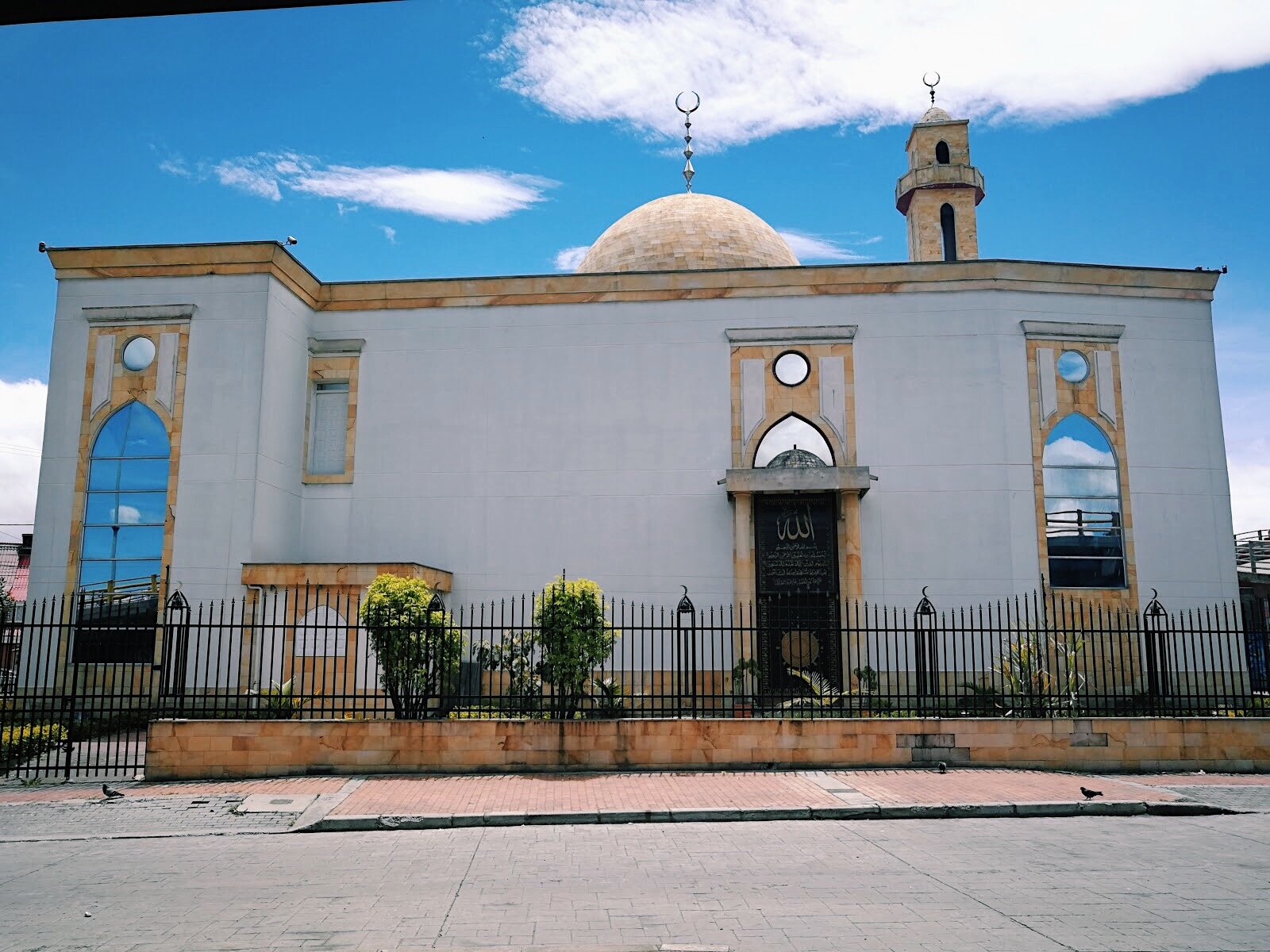Decades after Arab migration, Eissa Dar explores the story of Islam in Bogotá, Colombia…
Islam in South America can trace its origins to the arrival of Arab migrants in the late 19th century, however its real growth can be attributed to the arrival of the Levantine community in the 1960s, when they began settling along the continental coast. Among the various countries that saw the arrival of this new influx of Muslims, was Colombia. Naturally, Bogotá became the place to be; as the capital of the country, this was naturally the place of most economic benefit. It was here that the main concentration of Muslims in the country settled.
“In our memories and the memories of people here, it was at the end of the 90s and the beginning of the 2000s, but as a community it was from around 1977 that the first Muslim association was created. The population of Bogotá is 8 million people, [our] community is very small compared to this. Colombia isn’t a traditional destination of immigration, it used to be at the beginning of the 20th century but most immigrants were Christian.”
Bogotá experienced Muslim Arab migration from the Levant, introducing a new minority into this major South American nation. Other cities also showed some growth, however the economic situations in these smaller towns and cities forced a change in direction, and even more faces turned towards the unassuming capital. Currently in the city are three mosques that offer the Friday prayer. The largest of them was built with traditional Islamic architecture, the others have more humble conditions, houses that double as smaller mosques.
Ahmed, a key member of Bogotá’s Muslim community, spoke about the early arrival of Arab migrants in Colombia, and where they initially looked towards to build their new homes. Originally hailing from Algeria, he was recruited to teach at a university in Bogotá. He also acts as an English-speaking representative of the Abu Bakr Siddiq mosque, the biggest in the city, which offers both Arabic and Spanish services. Abu Bakr Siddiq mosque holds the biggest representative community of Muslims in Colombia, a focal point in community engagement.
The inside of the the Abu Bakr Siddiq mosque, a construction project which has been underway since 2010
He recalls how Arab migration moved towards the capital. Explaining the demographics as they currently stand, he says: “It was in Bogotá, in the 80s and the beginning of the 90s. There’s a city in the north called Maicao, and there used to exist a huge community of Muslims from Lebanon, Palestine and Syria. [The city] is on the boundary of Venezuela, but when the economy went down, a lot of people left.”
Naturally, the arrival of a new culture into a society with an already established history does not come without its challenges. This new society that formed through the integration of Muslims, came to include within it a distinctly Arab element that is still visible to this day. The result of this was the establishment of a distinctly Spanish Islam. Mosques now reflect this mix with an emerging population of native born-Muslims who have built an identity for themselves. This has resulted in mosques catering to both Arabic and Spanish speaking congregants.
“It depends on the mosque, because of the Jumu’a. [Some] are done in Spanish and Arabic, and others all in Spanish. There’s a huge community of Colombian Muslims; the relationship between natives and Arabs is very very good. We have some Colombian brothers and they’re very, very good Muslims. Their engagement, their commitment, It’s really admirable.”
Exterior view of the Abu Bakr Siddiq mosque in downtown Bogotá
Though Muslim cultural norms came from the Levantine Arabs, as Islam flourished in the country, the influences became increasingly apparent through their shared traditionalism and cultural practices. The respect held between adherents to the Catholic majority and the Muslims stem from their shared declaration of monotheism and mutual histories as Abrahamic faiths. Arab culture has slowly worked itself into the Latin American identity, with millions of South Americans claiming at least partial Arab ancestry.
Ahmed explains that “in Colombia, a Latin country, there’s Latin culture, but there are social similarities. If I had to compare with Europe, I would say Colombian culture is closer to Islam than European culture.”
However, as with all minority groups, misconceptions regarding the Muslims still exist in Colombia. Though similarities are present;
“Colombia and Latin America is still quite far, culturally and geographically, in terms of being or co-existing with Muslim people.”
With global media coverage of Muslims often covering fringe groups and ideologies, it is often easy for tensions to arise in a seemingly peaceful environment. However, the hodgepodge of backgrounds that is the Latin American continent, seeks to get to the bottom of its Muslim citizens.
Muslims are being seen increasingly in the media with often native Colombian Muslims being the subjects of attention. Islam is still new to the region, but the interest has peaked over recent years. Ahmed remains hopeful: “Now with the media, they’re trying to get closer to Islamic culture and find out more. We organize meetings for people to learn about Islam. They have their curiosity, they don’t know a lot about Islam, but they have the curiosity. The misconception comes from the international media.”
Highlighting the true integration of the Muslims within Colombia, Ahmed goes on to acknowledge that “in one of the mosques where Jumu’a is done mainly in Spanish, I would say more than 70 percent of Muslims are native.” He even notices that, in regard to new Muslims embracing Islam, they “see a lot in our mosque, not every day of course, but we do have sometimes people who come and embrace the religion. If I compare to Europe, it’s more than there.”
“In fact the way that you got my number it shows it’s easy to get in-touch with us. We do have all the communication media. We are invited by TV channels to speak about issues. You can imagine it’s the same thing like in Europe and the UK, we have voices here.”
But part of the establishment of any community is providing resources, and the biggest resource you can provide for any group of Muslims, is food. Most definitely a challenge for a country with only around 14,000 Muslims, but how does one get halal food in Bogotá? Ahmed provides some insights:
“Not that much, but in every mosque we have people who go out of Bogotá and make halal meat. [In] every mosque we have some freezers to sell halal meat, but you cannot find it like in other places. We have some restaurants, but not enough. Sometimes they call people from the mosque and we deliver, that’s what I do personally. But it’s not as easy as in the UK. You have a huge community there, which is not the case here.”
Islam found ample footing in Colombia, but what does the future look like? As more and more native Colombians turn to Islam through the influence of the communities that arrived in the 60s, the spread of the religion in the region, slowly but surely, increases daily. The masses that arrived found a multicoloured country with generous beauty consisting of towering mountains and the high seas. Life in Colombia became a retreat for the early Muslims who escaped troubles in their previous lives, and the new Muslims who were welcomed by their countrymen.
However, of course, there will always be room for improvement and an increased effort to build relations with a society who are still so new to Islam. The resources are still limited for those Muslims who are still finding their place amongst in Colombian society. But, Ahmed seeks only excellence for his adopted home.
“Of course it’s never enough. We don’t have people who are devoted to da’wah. But if it were the situation, it would be fantastic. We don’t make enough effort to this gorgeous religion.”
“I want to invite you to come here – come visit us, you’re welcome!”
Author: Eissa Dar






